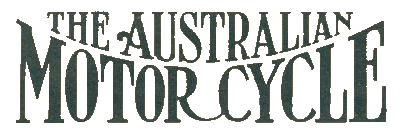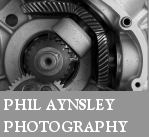


SEMl-ELLIPTlC SPRINGS APPLIED TO FRONT AND REAR.
JUST as The Motor Cycle persistently advocated the general adoption of the change speed gear, and so rendered the modern motor bicycle a go-anywhere, safe, and tractable mount, suitable for young or old, so has it worked equally hard to get the manufacturers to devote their attention to a properly sprung frame. For many years we have had spring forks, but it IS not until recently that the question of rear springing has been studied. The result of our labours is beginning to bear fruit, and many makers are now going into the question carefully, so that as soon as normal times once more prevail the improvement in comfort will do much to popularise the motor cycle.
Not only is the properly sprung frame a real benefit in point of view of comfort, but beyond the comfort of the rider, valuable as this point is, other considerations have to be borne in mind, such as reduction in wear, greater ease of maintenance, and longer life for the tyres. Nuts will no longer become loose, and tyres will last much longer, if the frame and engine be adequately sprung.
The enormously increasing amount of heavy traffic due to the war has resulted in a serious deterioration of road surface, which is practically universal, and this state of affairs has made the demand for the introduction of spring frames even more necessary than it was before.
One of the latest devices of this kind owes its being to a clever Australian, Mr. Whiting, who in the early part of this year brought over one of his spring frames fitted with a Douglas engine.
Not an Untried Design.
It was clearly a success, and was favourably received by the few people whom the inventor and his colleague. Mr. Herbert Credgington, approached This gave Mr. Whiting sufficient encouragement to build up a new and improved model, which we recently had the opportunity of inspecting. In his design, Mr. Whiting has adopted semi-elliptical leaf springs, wisely following automobile practice, and at the same time bearing in mind that this particular type of spring is smooth in action, almost devoid of rebound, and unlikely to break or give trouble. Not only in the springing, but also in the design of the frame itself, has a considerable amount of ingenuity been displayed. The frame gives a low riding position, is immensely strong, and is at the same time by no means heavy. The back forks are produced forward in a continuous line, so that they take the place of the secondary tube and terminate in a point at the base of the steering head. These two tubes are stayed by a substantial strut, and thus a triangle is formed giving great strength. The bottom bracket casting is specially designed to take the Jardine four-speed gear box, which is attached by means of bolts running through oval holes, thus providing means of adjusting the transmission chain. Alignment is preserved by the provision of a groove, along which the gear box slides.
This frame, we may mention, was built up by Mr. Whiting himself in the Midlands, is of entirely new design, and has not been previously described in any other journal. Turning first to the suspensions of the front wheel, it will be seen from the accompanying sketch that a V-shaped girder runs round the wheel, and is supported by stays on each side, extending from its rearmost end to the bottom of the fork crown. This girder serves as a form of attachment for the semi-elliptic springs which are provided with shackles at their rear. The upper part of the movable portion of the fork terminates in a dashpot arrangement, consisting of a phosphor-bronze piston working in a brass cylinder, which has a compression tap screwed into its top so that oil may be introduced from time to time. This device acts as an excellent shock absorber. The only unsprung portion of the frame is the short piece of mudguard to which the number plate is attached, and the manner in which it is bent up at the rear so as to prevent the oozing of mud and water on a wet day should be noted.
The Rear Springing.
Now, as regards the rear springing The bottom bracket casting, which holds the gear box as it terminates in a fork, serves as a lug for the chain stays, and also acts as a support from the spindle on which the inner frame which carries the rear wheel moves. This is a device similar to that employed on the old Lagonda tricar, and serves to maintain lateral rigidity and to allow the wheel free vertical movement without altering the belt tension ; thus the two arms of the inner frame act as radius rods, and are coupled directly to the centre of the semi-elliptical springs, which have shackles at each end. The spring clamps surround square blocks, which are pivoted at the base of the arms to which the wheels are attached, and so prevent jamming and allow the springs to work freely. Particular care has been exercised in the manufacture of the frame, and all moving parts, such as shackles, joints, and spindles, are provided with phosphor-bronze bushes.
The whole frame is ingenious, affords an excellent system of springing, and is not unsightly. The frame also lends itself readily to the attachment of a sidecar, and it is interesting to note that Mr. Whiting has the designs of a special sidecar in mind, in the frame of which the triangular method of construction is employed. Lugs are provided, by means of which the sidecar may be easily fixed to the rigid portion of the motor bicycle frame. The machine as a whole is thoroughly practical in every detail, and the specification is first class, such as a 4-5 h.p. J. A. P. engine, Jardine four-speed gear with chain-cum-belt drive, Best and Lloyd lubricator, and a capacious tank.
The interests of the Whiting spring frame are being looked after by Mr. Herbert Credgington, The Waverley Hotel, Southampton Row, London, W.C.
MANY spring frames appear to be efficient on paper, and yet in a road test do not come up to expectations, so to supplement the preceding description we gave the Whiting machines a good thirty miles run. Mr. Whiting being an Australian on his first visit to the Motherland, we took him down the Portsmouth Road, that favourite and historic highway from which Brooklands is but a stone s throw, so that he might see the famous track. He was mounted on the new model described in this issue, while for the first part of the journey we rode the original model fitted with a Douglas engine.
It was in Goodge Street where we first noticed the efficiency of the springing, ns the surface is badly-worn wood, furrowed with sharp shallow pot-holes, which on a rigid frame motor bicycle are most keenly felt, but on the Whiting they were practically imperceptible. The next severe test was down Exhibition Road, South Kensington, at the bottom of which a steam roller was doing much needed repairs. We know this piece of road extremely well, and purposely made for every rough crossing or bad pot-hole we could find at a good smart pace. It only suffices to say that all road shocks were most efficiently absorbed, though when going over one very bad hole the front fork bumped to its limit, owing to either the springs being a trifle light for our weight, or to the dash-pot not doing its duty. If the latter were the case, the matter can be easily remedied.
A good example of an ordinary rough road is that stretching from the Robin Hood Inn at the foot of Kingston Hill until the tramlines are reached. Here the value and efficiency of the springs were appreciated to the full. The machine was eminently comfortable, even though driven at a good speed, while the only effect of an excessively bad bump was a tendency to throw the rider off the saddle, which was not an unpleasant sensation, as the return was made without shock or jar. A circuitous route . was purposely taken through Kingston, to find out how the machine would corner. We found that the motor bicycle would take corners at a good pace with absolute steadiness, and give the rider every sense of security, and this was undoubtedly due to an absence of side play. In the open country the machine was purposely driven fast, so that the springing might be adequately tested. The last severe test was the road from Cobham to Brooklands, which is in really bad condition. This was taken on the new 4-5 h.p. model, which we found excellent, though the springs were a trifle stiffer than those on the mount we had been riding. Altogether we were most satisfied with the Whiting spring frame, which certainly appears to fulfil the claims made for it by its inventor.
The Motor Cycle, November 11th, 1915. Page 470
If you have a query or information about this Australian motorcycle please contact us